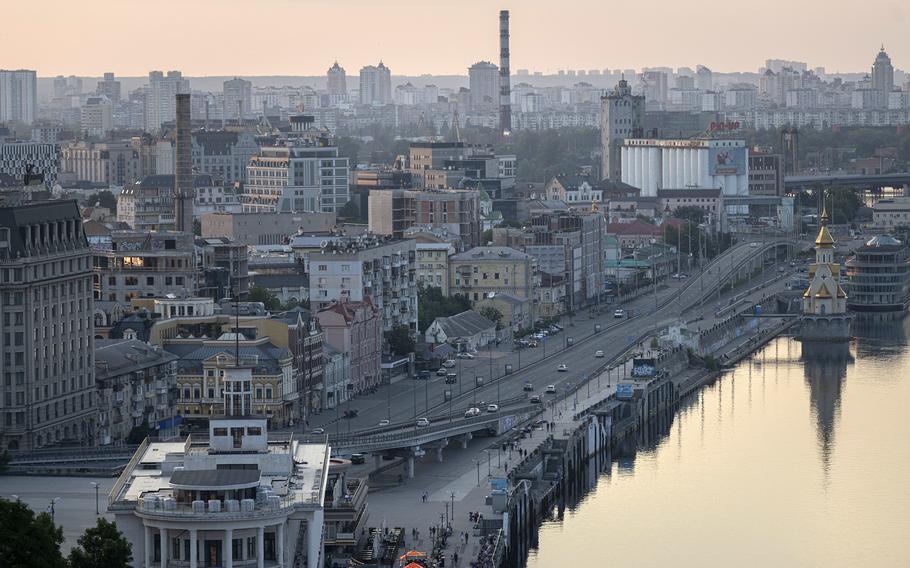Europe
Ukraine’s bondholders approve $20 billion debt restructuring
Bloomberg August 28, 2024

A near empty highway along the Dnipro River in Kyiv, on Monday, June 27, 2022. (Andrew Kravchenko/Bloomberg)
Ukraine received widespread support from private creditors to restructure its overseas bonds, allowing the nation to secure much-needed debt relief to finance its fight against Russian aggression.
The agreement more than two years after Russia’s invasion marks a swift resolution of the debt revamp following two rounds of negotiations in June and July, in which Kyiv asked bondholders to accept bigger losses than they initially aimed for.
Investors holding over 97% of the country’s more than $20 billion in international bonds will swap their securities for new notes, according to a filing on London stock exchange on Wednesday. The acceptance rate activated collective action clauses bringing all of the country’s foreign bonds into the restructuring.
“Finalizing the eurobond debt restructuring deal is a crucial step to ensure Ukraine maintains the budget stability needed to continue financing our defense, along with other critical budget items such as healthcare, education, and social services,” Ukrainian Finance Minister Serhiy Marchenko said in a separate statement.
The restructuring of the state-run road operator Ukravtodor’s guaranteed eurobonds was also approved by creditors.
Owners of the sovereign notes accepted nominal losses of 37% of their holdings across 13 notes, forgoing $8.67 billion of claims, according to terms of the deal. The agreement pushes back due dates for the bonds and reduces interest rates, a combination that Ukraine anticipates will save the economy $11.4 billion in the next three years.
Consensus was key as holders of at least two-thirds of the outstanding debt had to agree on a deal for it to be binding for all creditors, with a minimum of 50% threshold on each note. The participation level in each series of bonds ranged from 95% to 98.87%, according to the filling.
Ukraine’s new bonds will begin trading after the deal’s Aug. 30 settlement date.
With no end in sight to the fighting, the debt deal was sealed after a two-year moratorium on payments to private creditors ended. Ukraine spends almost all of its domestic revenue on financing the war, with fiscal assistance from the European Union, the U.S. and the International Monetary Fund used to cover social services.
Both the IMF and the bilateral creditors backing the debt deal were key to unlocking bondholders’ acceptance. They agreed on bondholders getting interest payments starting as soon as 2025, while the country will still be receiving disbursements under a $15.6 billion IMF loan that runs until early 2027.
An IMF team will meet with Ukrainian officials next week to review the budget outlook and decide whether to disburse the next $1.1 billion from the aid program.
The government also needs to renegotiate its debt with holders of $2.6 billion of GDP warrants, which have disbursements linked to economic performance, providing creditors with payments if gross domestic product expansion exceeds certain levels.
The government, which said it would “commit to ensure the fair and equitable treatment of holders,” on Tuesday imposed a temporary moratorium on payments on the instrument from May 31 next year. The country also temporarily suspended debt payments from state run energy grid Ukrenergo starting Nov. 9.
Ukraine made a payment of about $200 million to holders of its GDP warrants on Aug. 1, including to Aurelius Capital Management LP and VR Capital Group.
With assistance from Deana Kjuka and Volodymyr Verbianyi.
More stories like this are available on bloomberg.com
©2024 Bloomberg L.P.